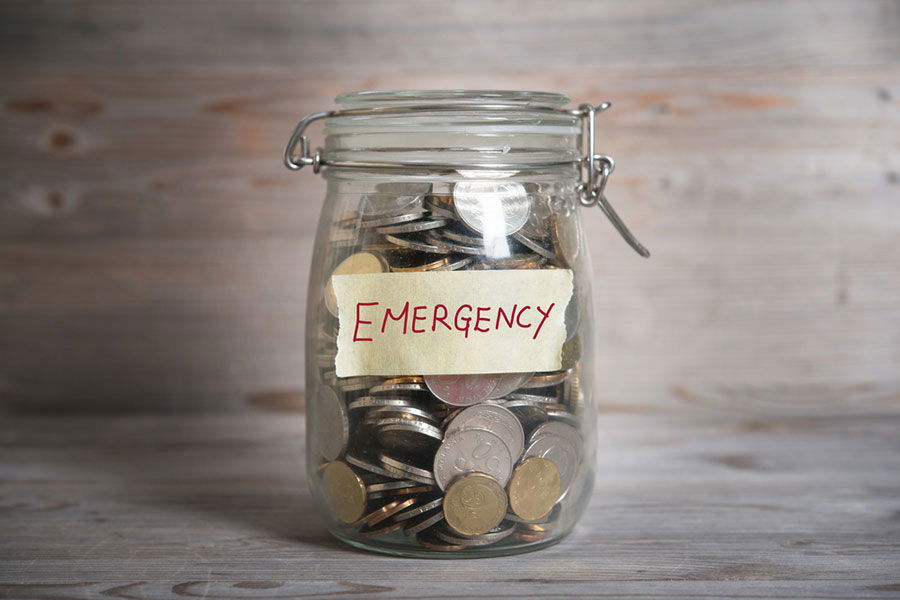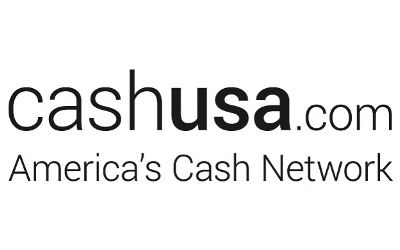Need cash fast but worried about your credit score? You’re not alone. Many Americans face financial emergencies without savings to fall back on, and bad credit can make borrowing even harder. A surprise medical bill, car repair, or urgent expense can quickly throw your finances off track, and without access to traditional loans, finding a solution can feel overwhelming.
But the good news? Some lenders specialize in emergency loans for bad credit, offering much better rates than payday loans. These loans can provide the cash you need quickly—sometimes within 24 hours—without trapping you in a cycle of high-interest debt.
Best Emergency Loans for Bad Credit of 2025
Even with a low credit score, you still have options. Some lenders look beyond your credit history and consider factors like income and employment. Below, we’ve reviewed the best emergency loan providers that offer quick funding and flexible terms for bad credit borrowers.
1. MoneyMutual
MoneyMutual connects borrowers with a network of lenders offering emergency loans up to $5,000, with funding available as soon as the next business day.
2. CashUSA
CashUSA helps borrowers access emergency loans of up to $10,000 with competitive APRs. The service connects applicants with multiple lenders, offering a quick and easy way to compare loan options.
3. Bad Credit Loans
Bad Credit Loans specializes in connecting borrowers with lenders willing to work with low credit scores. If you’re worried about getting approved, this platform makes it easy to explore your options.
4. Upgrade
Upgrade offers personal loans up to $50,000, making it one of the best options for borrowers needing a larger emergency loan. Its interest rates start lower than many competitors, and checking your rate won’t impact your credit score.
5. Cash Advance
If you need a smaller loan to cover short-term expenses, Cash Advance offers a quick way to get up to $1,000. The platform works with lenders who approve borrowers with bad credit and deposit funds as soon as the next business day.
6. OneMain
OneMain offers personal loans ranging from $1,500 to $30,000, making it a good choice for borrowers who need more substantial funding. While the application starts online, final approval requires an in-person meeting at a branch.
7. LendingClub
Lending Club offers personal loans up to $40,000, with flexible repayment terms and competitive rates for qualified borrowers. A minimum credit score of 600 is required to qualify.
Key Features:
- Loan Amount: Up to $40,000
- APR: 6.95% to 35.89%
- Loan Term: 36 to 60 months
- Funding Time: 1 to 2 business days
Pros:
- Large loan amounts available
- No prepayment penalties
- Fixed interest rates for predictable payments
Cons:
- Requires a credit score of at least 600
- Origination fees apply
- Higher rates for lower credit scores
What to Know About Emergency Loans for Bad Credit
Emergency loans can provide fast cash when you’re facing an unexpected expense, but borrowing with bad credit comes with trade-offs. Understanding how these loans work and what to expect can help you make a smarter financial decision.
How They Work
Emergency loans for bad credit are typically unsecured personal loans designed to cover urgent expenses. Since they don’t require collateral, lenders rely on your credit history, income, and overall financial situation to determine approval. Because bad credit signals a higher risk to lenders, these loans often come with higher interest rates and stricter terms than loans for borrowers with good credit.
If approved, you’ll receive a lump sum, which you’ll repay in fixed monthly installments. Many lenders offer same-day or next-day funding, making them a faster option than traditional bank loans.
Typical Loan Terms
Loan terms vary by lender, but most emergency loans for bad credit fall within these general ranges:
- Loan amounts: $500 to $50,000, depending on the lender and your qualifications
- APR: 5.99% to 35.99%, with higher rates for lower credit scores
- Repayment terms: 3 to 72 months, with shorter terms leading to higher monthly payments
While some lenders offer lower APRs, most bad credit borrowers will qualify for rates on the higher end of the scale.
The Reality of Borrowing with Bad Credit
Getting approved for an emergency loan with bad credit is possible, but you’ll likely pay more in interest and fees. Some lenders may also limit the amount you can borrow or require proof of steady income.
Even if you qualify, it’s important to borrow only what you need and have a clear plan for repayment. Missing payments can make your financial situation worse, leading to late fees and further credit damage. If you’re struggling to get approved or facing high APRs, consider alternative options before taking on more debt.

Pros & Cons of Emergency Loans for Bad Credit
Before applying, weigh the benefits and potential downsides to decide if an emergency loan is the right move.
Pros
- Fast access to cash: Many lenders deposit funds within 24 hours.
- Flexible use of funds: You can use the loan for medical bills, car repairs, rent, or other urgent expenses.
- Potential credit score improvement: Making on-time payments can help rebuild your credit over time.
Cons
- Higher APRs: Bad credit borrowers often face interest rates at the higher end of the scale.
- Risk of predatory lending: Some lenders target bad credit borrowers with hidden fees and unreasonable terms.
- Potential for deeper debt: If repayment becomes difficult, you could end up in a cycle of borrowing to stay afloat.
Emergency loans can be a financial lifeline, but they should be used wisely. If you’re considering one, compare multiple lenders and explore alternatives to find the best option for your situation.
How to Qualify for an Emergency Loan with Bad Credit
Lenders look at more than just credit scores when approving emergency loans. Understanding what factors matter most and taking steps to strengthen your application can improve your chances of getting approved with better terms.
What Lenders Look At
- Income: A stable source of income reassures lenders that you can repay the loan. This can include employment wages, self-employment earnings, government benefits, or other verifiable income.
- Employment history: A steady work record shows financial stability. Frequent job changes or gaps in employment may raise red flags for lenders.
- Debt-to-income ratio: Lenders compare your monthly debt payments to your income to assess your ability to take on more debt. A lower ratio improves approval odds.
- Alternative credit factors: Some lenders consider utility bills, rent payments, and banking history for applicants with low credit scores.
Steps to Improve Approval Odds
- Apply with a co-signer: A co-signer with good credit can help you qualify for a loan with lower interest rates.
- Reduce existing debt: Paying down outstanding balances can improve your debt-to-income ratio and boost your approval chances.
- Look for lenders that accept alternative credit data: Some lenders consider factors beyond credit scores, such as cash flow and on-time bill payments.
Prequalification
Many lenders offer prequalification, which allows you to see potential loan offers without affecting your credit score. This helps you compare rates, terms, and fees before committing to a full application. Prequalification is a useful step in finding the most affordable loan for your situation.
Where to Find the Best Emergency Loans
Bad credit can limit borrowing options, but there are still reliable lenders that offer emergency loans with fair terms. Knowing where to look can save you time and money.
Online Lenders
Many online lenders specialize in personal loans for bad credit, offering fast approval and flexible eligibility requirements. Applications can be completed in minutes, and funds are often available within one or two business days. These lenders are a good option for borrowers who need cash quickly and may not qualify for traditional bank loans.
Credit Unions
Credit unions tend to be more forgiving of bad credit and often offer lower interest rates than online lenders. Membership is required, but joining is usually easy. If you already belong to a credit union, checking for loan options there could lead to better terms than other borrowing alternatives.
Community Banks
Some community banks offer personal loans to existing customers, even those with bad credit. While approval criteria can be stricter than with online lenders, having an established relationship with the bank may improve your chances of qualifying.
Alternative Financing
- Buy now, pay later services: Some platforms allow you to split purchases into smaller payments without interest.
- Employer cash advances: Some companies offer paycheck advances or emergency assistance programs.
- Community resources: Local nonprofit organizations and government programs may provide emergency financial assistance, especially for housing and utility costs.
How to Compare Emergency Loan Offers
Finding the right loan requires more than just choosing the lender with the fastest approval. Comparing key factors like interest rates, fees, and repayment terms ensures that you get the best deal possible.
APR vs. Interest Rate
The APR represents the total cost of borrowing, including interest and fees. The interest rate only reflects the base cost of the loan. Comparing APRs across lenders gives a clearer picture of which loan is truly more affordable.
Fees to Watch Out For
- Origination fees: Charged by some lenders for processing the loan, usually 1% to 8% of the loan amount.
- Late payment penalties: Fees charged if you miss or delay a payment.
- Prepayment penalties: Some lenders charge fees for paying off a loan early.
Funding Speed
Emergency loans are designed for fast access to cash, but funding speeds vary. Some lenders offer same-day deposits, while others may take up to a few business days. If time is a priority, confirm the lender’s estimated funding timeline before applying.
Repayment Flexibility
Shorter loan terms mean higher monthly payments but less interest paid over time. Longer terms lower monthly costs but result in more interest overall. Finding a repayment schedule that fits your budget can prevent future financial strain.
Emergency Loan Alternatives
Emergency loans can provide fast cash, but they’re not always the best solution—especially if you have bad credit. High interest rates and fees can make repayment difficult, leading to a cycle of debt. Before taking out a loan, consider these alternatives that may help without adding financial strain.
Personal Loans From Friends & Family
Borrowing from someone you trust can be a cost-effective way to get through a financial emergency without dealing with high interest rates. However, mixing money and personal relationships can create tension if not handled properly.
- Set clear repayment terms: Treat the loan like a formal agreement by outlining repayment amounts, due dates, and any potential interest.
- Put it in writing: A written agreement helps prevent misunderstandings and keeps both parties accountable.
- Communicate openly: If repayment issues arise, be upfront about your situation and propose a new plan.
Credit Card Advances
A credit card cash advance allows you to withdraw cash from your credit card’s available balance. While this can be a fast way to access emergency funds, it comes with drawbacks.
- Why it may be better than a loan: If your credit card has a lower APR than the emergency loan offers you qualify for, a cash advance could be a cheaper option.
- Why it may be worse: Cash advances often have high interest rates, plus immediate fees. Unlike regular credit card purchases, there’s no grace period—interest starts accruing immediately.
If you choose this route, only take what you need and pay it off as quickly as possible to minimize interest charges.
Negotiating Bills & Payment Plans
Before taking out a loan, reach out to your service providers, creditors, or landlord to discuss payment options. Many companies offer temporary relief for customers facing financial hardships.
- Medical bills: Hospitals and doctor’s offices often allow you to set up a no-interest payment plan. Some may even reduce charges if you explain your situation.
- Utility bills: Many utility companies offer hardship programs, deferred payments, or seasonal assistance to help prevent shutoffs.
- Credit card debt: Some issuers may lower your interest rate, reduce your minimum payment, or offer a temporary forbearance plan.
Being proactive can help you avoid unnecessary borrowing while keeping your accounts in good standing.
Community & Government Assistance
If you’re struggling financially, local and federal programs may provide relief. These resources are designed to help with essential expenses, often without requiring repayment.
- Nonprofits and charities: Organizations like the Salvation Army, United Way, and local churches offer financial assistance for rent, utilities, and groceries.
- Government programs: Programs like the Low Income Home Energy Assistance Program (LIHEAP) and Supplemental Nutrition Assistance Program (SNAP) help cover essential living costs.
- Employer assistance: Some workplaces offer emergency relief funds or paycheck advances for employees in financial distress.
Exploring these options before taking on new debt can help ease financial pressure without creating long-term repayment challenges.
Final Thoughts
Emergency loans can help in a financial crisis, but they should be used carefully. Compare options, review terms, and avoid lenders with hidden fees or predatory practices. Borrow only what you need and ensure you can manage the repayments.
While a loan can provide short-term relief, focusing on long-term financial health is key. Building an emergency fund and improving your credit can help you access better financial options in the future. Planning ahead can reduce the need for high-cost borrowing when unexpected expenses arise.











